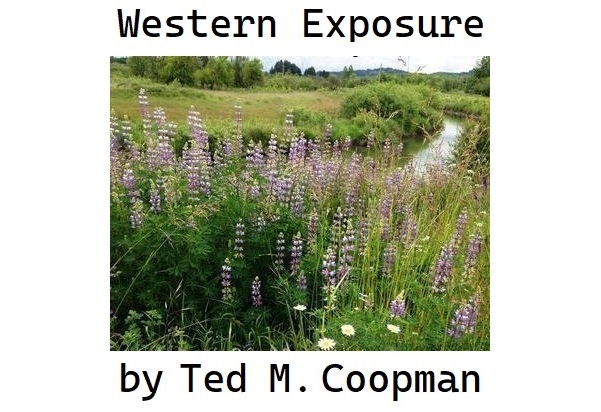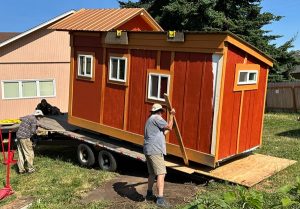Passing gas: Rethinking regulating retail fuel stations
6 min read
by Ted M. Coopman
Last year I pointed out to Mayor Lucy Vinis and the Eugene City Council the disconnect between a (now-defunct) natural gas ban and yet still permitting retail fuel pumps. Our Jefferson Westside neighborhood was unsuccessfully fighting waivers on safety requirements for a new 7-Eleven fuel and convenience store at Polk Street and 7th Avenue. At the time, my comments were more rhetorical than literal, but now the council is considering regulations to curb the expansion of retail fuel stations.
While on its face capping the number of retail fuel pumps may sound great, bans rarely make for effective public policy. A closer look suggests that a cap on retail fuel pumps may not have the intended impacts on an industry already in decline.
Businesses invest in new facilities that have high returns on investment (ROI). Therefore, it might be more productive to first look at the economic incentives for creating new retail fuel stations before making policy.
Big Oil makes big bucks – Retailers? Not so much
The number of retail fuel stations in the U.S has been in sharp decline for several decades and market analysis predicts that 80% of retail fuel sector may be unprofitable by 2035. This is driven by increased gas mileage, EV sales, ride-share, the waning interest of youth in driving, and cost. Add to that a massive federal investment in EV retail subsidies and charging networks. There is just not much money to be made as profit margins on retail fuel keep shrinking, with the average currently at about 1%.
The value of any fuel station network (that is what we are mostly talking about) is the network itself – illustrated by the proliferation of new 7-Elevens. Scale reduces costs. We are not seeing new fuel facilities in Eugene as much as convenience stores (with sometimes drive thru coffee) that also have fuel pumps.
New stations are not a response to demand for fuel options, which we know is decreasing. A vast majority of the profits from convenience store facilities with fuel are from food, beverages, personal care items, tobacco products, and impulse buys, in that order—fuel comes last. Fuel is just an excuse for the stop. The expansion we see is to take market share for the convenience store with shiny new identical operations that are familiar and attractive to customers.
As Councilor Mike Clark pointed out, any increase in the price of fuel is regressive (impacts low-income folks more), as those with higher incomes move to EVs and the gas burners they replace move down market. Gas vehicles sales in Oregon, California, and Washington are scheduled to phase out by 2035. The average age of the U.S. vehicle fleet is 12.5 years and rising, so while gas burners will be around for a while yet, use will decrease and there is a foreseeable end point.
Value Point: Getting the biggest impacts for city council efforts
Given all that, how much effort should we put into trying to reduce the number of fuel stations?
While it may have a high performative value, the impact of a cap would be negligible while it is likely to draw—as Councilor Alan Zelenka cautioned—legal challenges and more bad blood from the community. Most people still drive gas burners, and nothing makes people crazy like high gas prices and parking. (Don’t get me started on the new state parking rules…)
In my estimation, the biggest issue is the density for these facilities. Convenience retail (with fuel) cluster on major transportation corridors in lower-income neighborhoods, where land is less expensive. Therefore, reducing the density of these facilities will, by extension, reduce the available prime land for these operations and the number of pumps.
Of the options floated by city staff, requiring 1,000 feet between stations is the most viable and would probably be the most effective in reducing impacts on low-income neighborhoods that statistically have a higher number of renters, people of color, and folks with chronic health issues as well as naturally reducing the number of pumps. There is precedent as Eugene currently mandates 1,000-foot buffers between cannabis dispensaries, so a legal challenge is less likely.
I agree with Councilor Jennifer Yeh’s response to requiring EV charging stations alongside fuel pumps: Currently few want to linger as they charge their car at a fossil fuel station. However, the ability to fast-charge EVs is rapidly improving. For example, as my buddy keeps bragging to me, his 2023 IONIQ 5 can be completely charged at a DC fast charger in about 20 minutes (I drive a 2020 Model Y).
Still, unlike fossil fuel, drivers have a lot of options to charge their cars. But it illustrates the point that the council needs to be looking at longer time horizons with an eye toward the likely trajectory of technology and markets. There are trillions of dollars on the line to shift to EVs by reducing charging times and increasing range. Since the goal of the pump is to drive other sales, as the number of EVs and speed of charging increase, retailers will move to add charging capacity on their own.
A second option that would less regressive (and visible) than a per-gallon fuel climate surcharge would be a climate impact fee per pump. While such a fee would not be enough to de-incentivize creating new pumps, the revenue could be directed to weatherization grants for low-income homeowners and rentals that are affordable to those making, say, 80% or less of Area Median Income (AMI)1.
Return on investment for weatherization is very high. If you are looking for reductions in carbon, weatherization—such as insulation, heat pumps, efficient windows, and appliances—is the biggest bang for your buck. Weatherization creates good-paying local jobs, and the benefits go directly to the people who need it the most:
- Reduced energy use = Less carbon and lower heating and cooling bills.
- Switching from gas to electric appliances reduces household emissions.
- Installation of heat pumps makes AC and air filtration more available as temperatures increase and wildfires become more frequent.
- Weatherization has been shown to have substantial knock-off health benefits. These include healthier air, less respiratory illness, reduced noise, and less stress due to lower heating/cooling bills.
- Combining with existing incentives creates a multiplier effect and further lowers costs.
- Money not spent on heating and cooling bills is spent elsewhere.
For these reasons I encourage the council to take a closer look at the current and future economics of proliferating convenience retail and fuel facilities when deciding on a course of action. Doing “something” is not the same thing as actually “accomplishing” something.
Express your views to the Eugene City Council, mayor, and city management. Email them.
1 The Area Median Income (as retrieved from the City of Eugene website) is $55,800 for a one-person household, or $79,600 for a four-person household. 80% of AMI is $44,600 for a one-person, or $63,700 for a four-person household.
Western Exposure is a semi-regular column that looks at issues and challenges from a West Eugene perspective – a perspective that is often ignored or trivialized by city leadership and influential groups and individuals largely based in south and east Eugene.
Western Exposure rejects the fauxgressive party line, performative politics, and “unicorn ranching” policy in favor of pragmatism focused on the daily experiences of residents and small businesses in Eugene—and West Eugene in particular.
Ted M. Coopman has been involved in neighborhood issues since 2016 as an elected board member, and now chair, of Jefferson Westside Neighbors and has 30+ years experience as an activist and community organizer. He earned a Ph.D. in Communication (University of Washington) and served on the faculty at San Jose State University from 2007 to 2020.
Ted’s research on social movements, activist use of technology, media law and policy, and online pedagogy has been published and presented internationally and he taught classes ranging from research methodology to global media systems. He and his spouse live in Jefferson Westside with an energetic coltriever and some very demanding and prolific fruit trees.



